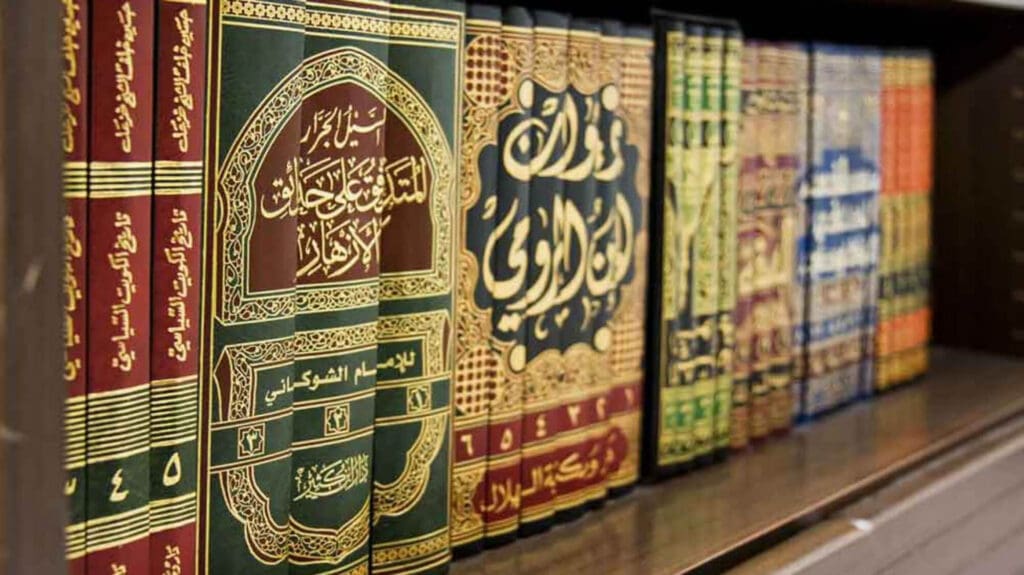
The Fiqh of Menstruation (Ḥayḍ) and Irregular Bleeding (Istiḥāḍah): A Brief Guide
Many of us were never taught how to understand the natural rhythms of our bodies — whether at school or in the masājid. Yet, knowledge is a sacred trust; and in this case, it’s essential. Understanding the Islamic rulings around menstruation (ḥayḍ) and abnormal bleeding (istiḥāḍah) helps Muslim women navigate acts of worship like ṣalāh (prayer), ṣawm (fasting), Qur’ān recitation, and marital relations. By learning these rulings, women can stay spiritually connected, while honouring Islamic law, with confidence and clarity.
In this blog, we’ll explore the key rulings from the four major Sunni schools of thought — Ḥanafī, Mālikī, Shāfiʿī, and Ḥanbalī — to provide you a well-rounded understanding of this important topic.
Disclaimer: The rulings discussed here are based on traditional Islamic legal guidelines for typical menstrual experiences. This content is for educational purposes only and does not cover every unique or exceptional case. Since individual circumstances can vary greatly, we encourage you to seek personalised advice from a qualified Islamic scholar familiar with your school of thought. May Allah ﷻ bless us with beneficial knowledge and guide us to apply it with sincerity and wisdom.
Learning the fiqh of menstruation: why it matters
The fiqh of menstruation goes far beyond technical rulings. Indeed, knowing when worship is required, paused, or adapted, means women can fulfil their religious duties with confidence and clarity. Such knowledge is considered farḍ al-‘ayn (personally obligatory) as it directly impacts day-to-day acts of worship. Misunderstanding or neglecting it can result in missed obligations or unintentional violations of sacred acts. It is also incredibly helpful (and we would heavily encourage!) for Muslim men to learn these rulings to better support and care for the women in their lives. Being able to talk openly about health issues leads to better understanding, health and stronger relationships.
The Prophet Muhammad ﷺ beautifully emphasised the importance of learning: “Seeking knowledge is an obligation upon every Muslim.” (Ibn Mājah)
The female companions of the Prophet ﷺ also left a remarkable legacy in this regard. They approached even personal matters with sincerity and a deep desire to learn. ʿĀʾishah (ra), the beloved wife of the Prophet ﷺ, praised the women of the Anṣār, saying:
“How good are the women of the Anṣār! Shyness did not prevent them from seeking knowledge of their dīn.” (Muslim 332c)
Islamic scholars have long emphasised that learning women’s health rulings is integral to a believer’s spiritual journey. With this understanding, women can approach their worship with assurance, deepening their connection to Allah ﷻ, all while honoring His commands.
Key terms you need to know
Understanding key terms related to menstruation helps demystify the Islamic rulings surrounding a woman’s cycle. Here’s a breakdown of some essential terms:
Menstruation (ḥayḍ), also known as a period, is the vaginal bleeding that occurs when the lining of the uterus is shed each month. It’s a normal part of a woman’s reproductive cycle and usually happens about once a month. In Islamic law (sharīʿah), ḥayḍ specifically refers to blood that flows naturally from the womb of a mature woman during her regular menstrual cycle, according to certain legal criteria. During this time, women pause specific acts of worship like ṣalāh (prayer), fasting, and Qur’ān recitation.
Istiḥāḍah refers to bleeding outside of a woman’s regular menstrual cycle. It could result from health conditions, irregular cycles, or other causes. Unlike ḥayḍ, istiḥāḍah doesn’t prevent acts of worship. Women experiencing this type of bleeding continue praying and fasting but may need to perform extra purification steps, such as renewing wuḍū’ before each prayer.
Ṭuhr is the time of purity between two menstrual cycles. It’s when a woman’s menstrual bleeding has stopped, allowing her to resume all acts of worship. Understanding the minimum and maximum duration of ṭuhr is important for applying Islamic rulings accurately.
Every woman has a unique menstrual pattern, called her ‘ādah. It includes details like how long her period lasts, how many days of purity follow, and how often her cycle repeats. Knowing her ‘ādah is essential for correctly applying Islamic rulings, especially in cases of irregular bleeding or uncertainty about when her period starts or ends.
What should a woman track during her cycle?
Monitoring menstrual symptoms can help distinguish between ḥayḍ (menstruation) and istiḥāḍah (abnormal bleeding). This will ensure that religious rulings are applied correctly. Here are key aspects to keep an eye on:
- Colour: Menstrual blood can appear in various shades, including red, brown, yellow, pinkish, or even dark black. Spotting these colours can help you identify whether the bleeding is part of ḥayḍ or another type of discharge.
- Flow: The amount of bleeding can range from light spotting to a heavy flow. Tracking this can clarify whether the bleeding aligns with your typical menstrual pattern.
- Consistency: Pay attention to the texture of the discharge. It may be thick, thin, clumpy, or watery.
- Duration: The start and end dates of bleeding, including any gaps in between. This can help you establish a regular menstrual cycle (‘ādah) and identify any irregular patterns.
Many scholars recommend using a kursuf to check fresh discharge. A kursuf is a small piece of absorbent material, ideally made from 100% natural fabrics like cotton, to prevent irritation. It is placed at the vaginal opening and secured between the labia minora. Unlike a tampon, the kursuf is not inserted fully into the vaginal canal, and unlike a liner, it is not completely external.
Using a kursuf gently can help assess the exact colour, consistency, and volume of discharge, as it prevents the fluid from oxidising or undergoing chemical changes that might alter its appearance.
Minimum period of Ṭuhr (Purity)
| School | Minimum Duration |
|---|---|
| Ḥanafī | 15 full days (360 hours) |
| Mālikī | 15 full days (360 hours) |
| Shāfiʿī | 15 full days (360 hours) |
| Ḥanbalī | 13 full days (312 hours) |
If bleeding occurs before this interval ends, it is considered istiḥāḍah, not ḥayḍ.
Minimum and maximum times for a valid Ḥayḍ
| School | Minimum (Days) | Maximum (Days) |
|---|---|---|
| Ḥanafī | 3 full days (72 hours) | 10 full days (240 hours) |
| Mālikī | No minimum | 15 full days (360 hours) |
| Shāfiʿī | 1 full day (24 hours) | 15 full days (360 hours) |
| Ḥanbalī | 1 full day (24 hours) | 15 full days (360 hours) |
If bleeding is less than the minimum or exceeds the maximum, it is considered istiḥāḍah.
When menstruation ends
Menstruation is considered over when a woman notices complete cessation of bleeding, confirmed by one of two signs:
- White discharge: A clear or white discharge indicating purity. This is mostly commonly seen by women.
- Dryness: If no discharge is present and the vaginal area feels dry after wiping with a clean tissue or inserting a small piece of cotton (kursuf).
If either of these signs appears after the menstrual period, one should perform ghusl (ritual bath) and resume all acts of worship. However, if spotting or coloured discharge (red, brown, or yellow) returns within the habit and maximum menstrual days according to her school of thought, she should consider her menstruation ongoing.
What counts as Istiḥāḍah?
Istiḥāḍah refers to any abnormal uterine bleeding that does not meet the criteria for ḥayḍ. This includes:
- Bleeding that lasts less than the minimum or more than the maximum period of menstruation.
- Bleeding occurring within the ṭuhr period.
- Bleeding due to illness or other medical conditions.
Women experiencing istiḥāḍah must perform a fresh wuḍū’ for each prayer time. Unlike during ḥayḍ, they should continue performing religious obligations like prayers and fasting.
What if bleeding occurs earlier than expected?
If a woman’s cycle starts earlier than expected, rulings depend on whether she completed the minimum ṭuhr:
| School | Ruling |
|---|---|
| Ḥanafī | Considered ḥayḍ if ṭuhr lasted 15 days |
| Mālikī | Considered ḥayḍ if ṭuhr lasted 15 days |
| Shāfiʿī | Considered ḥayḍ if ṭuhr lasted 15 days |
| Ḥanbalī | Considered ḥayḍ if ṭuhr lasted 13 days |
Is yellow or brown discharge considered Ḥayḍ?
The classification of yellow or brown discharge in Islamic law depends on the school of thought a person follows.
According to the Ḥanafī and Ḥanbalī schools of thought, yellow or brown discharge that appears outside of a woman’s typical menstrual days is not considered ḥayḍ (menstruation). This type of discharge is treated as istiḥāḍah (abnormal bleeding), meaning religious duties such as prayer, fasting, and Qur’ān recitation remain obligatory.
In contrast, the Mālikī and Shāfiʿī schools consider any yellow and brown discharge as ḥayḍ, even outside the expected timeframe of a woman’s menstrual cycle.
Final reflections
As Muslims, cycles are central to our spiritual lives. We rise with the sun for Fajr, fast from dawn to sunset, and mark the beginning of Islamic months by the moon. Similarly, our bodies move through unique, personal cycles, offering us opportunities for self-awareness, care, and spiritual growth. Islamic rulings on menstruation are rooted in compassion and wisdom. They honour the natural processes women experience while providing structured guidelines for religious observance. By learning and applying this knowledge, Muslim women can nurture their relationship with Allah, practice their faith with confidence, and gain clarity in their religious duties.
If you have specific or unique questions, consult a trusted Islamic scholar. May this guide be a start in helping you navigate these important aspects of worship with peace and certainty.
Reviewed by Imam Bilal Brown

